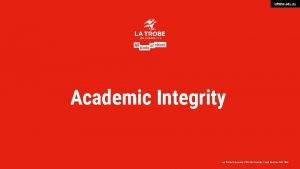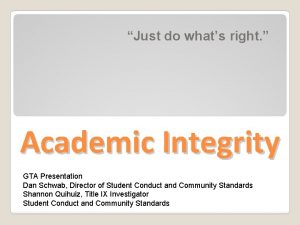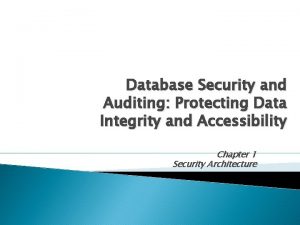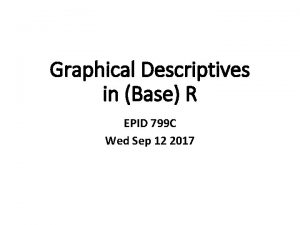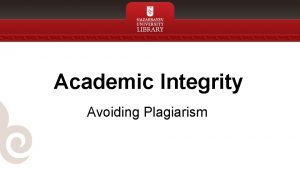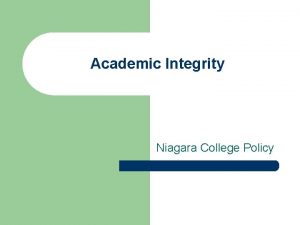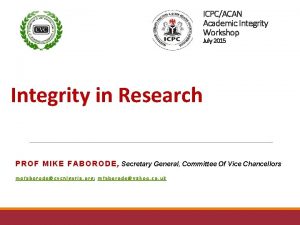ACADEMIC INTEGRITY WHAT IS ACADEMIC INTEGRITY Academic integrity














- Slides: 14

ACADEMIC INTEGRITY

WHAT IS ACADEMIC INTEGRITY? • Academic integrity means engaging in responsible academic behavior. • Schools take academic integrity very seriously. • Failing to follow rules of academic integrity can have serious consequences, including suspension or even expulsion.

DOS AND DON’TS OF ACADEMIC INTEGRITY The following slides detail some dos and don’ts for making sure you’re a responsible student.

Do credit others for their work. Don’t present others’ work as your own.

Do your own work. Don’t collaborate with others unless you have permission.

Do original work for each assignment. Don’t recycle your own work from previous classes or assignments.

Do study hard for exams. Don’t share exam answers with others or let others share answers with you.

PLAGIARISM • Plagiarism is passing off someone else’s ideas as your own. Avoiding plagiarism is a key component of academic integrity. • Teachers take plagiarism very seriously—and many might not care if it was done unintentionally. • The following are some tips for identifying and avoiding plagiarism. You should always cite your source if you use someone else’s ideas. This applies to quoting, paraphrasing, and summarizing.

QUOTING • Using someone’s exact words in something you’ve written. • Always put quotes in quotation marks and give credit to the author.

PARAPHRASIN G • Putting an idea or a passage from a source into your own words. • You don’t have to use quotation marks, but you must still attribute the source.

SUMMARIZING • Taking only the main ideas within a source and putting them into your own words. • Like a paraphrase, quotation marks are not required, but you must attribute the source.

• In a Word or handwritten document, keep a collection of the summaries, paraphrases, and direct quotes you collect as you read a source. • Be sure to put the source at the top of each group so you know where they came from. AVOIDING PLAGIARISM

• Academic integrity is your responsibility. When in doubt, talk to your teacher.

• Woodburn Press • Academic Integrity • Copyrighted Material – 2020 • www. woodburnpress. com
 5 pillars of trust
5 pillars of trust Six fundamental values of academic integrity
Six fundamental values of academic integrity Tcnj academic integrity
Tcnj academic integrity La trobe studiosity
La trobe studiosity Five fundamental values of academic integrity
Five fundamental values of academic integrity Academic integrity seneca
Academic integrity seneca Whats academic integrity
Whats academic integrity University of arkansas academic integrity
University of arkansas academic integrity Usc plagiarism policy
Usc plagiarism policy Altered skin integrity
Altered skin integrity Database security levels
Database security levels Knowledge strength integrity
Knowledge strength integrity What is ecological integrity
What is ecological integrity Graphical integrity
Graphical integrity Integrity data aca
Integrity data aca



